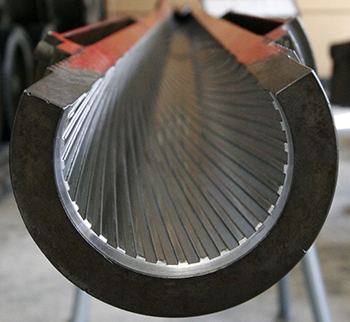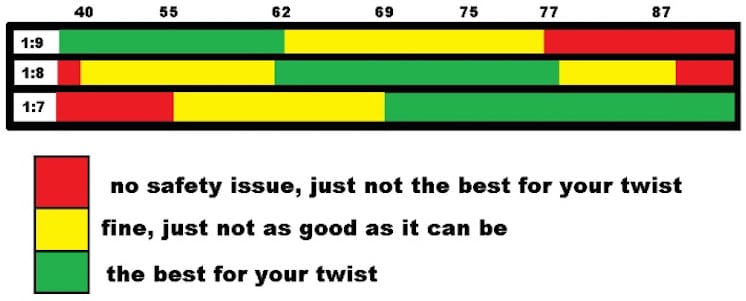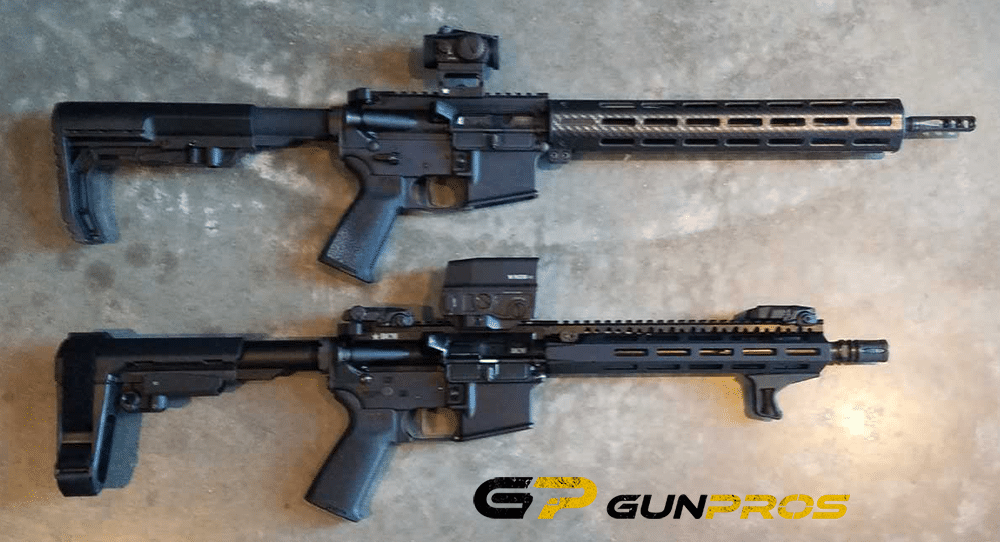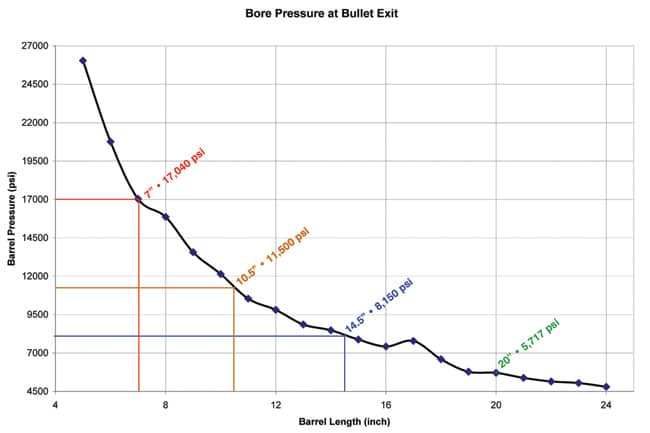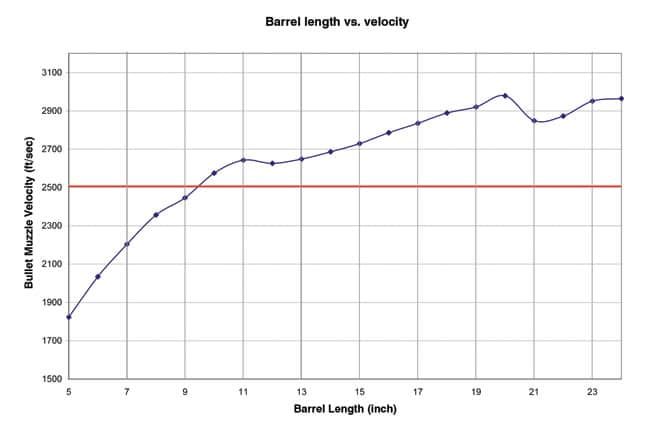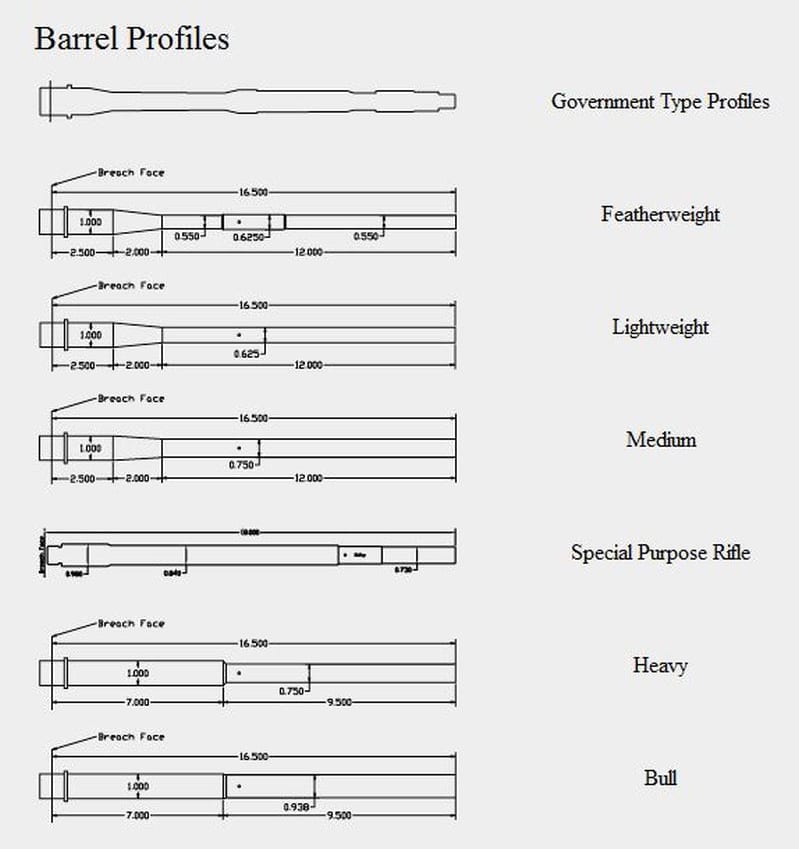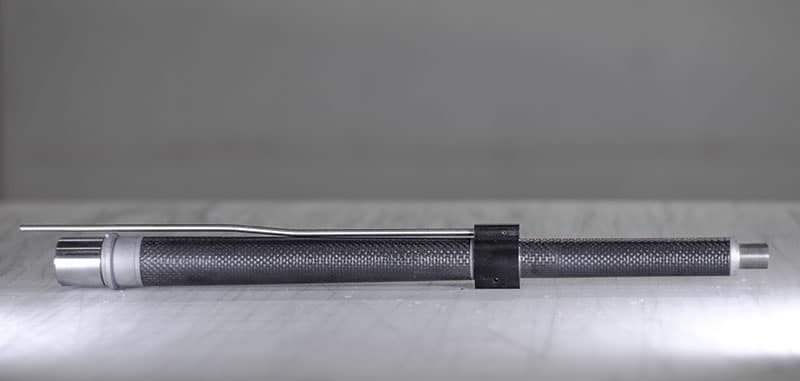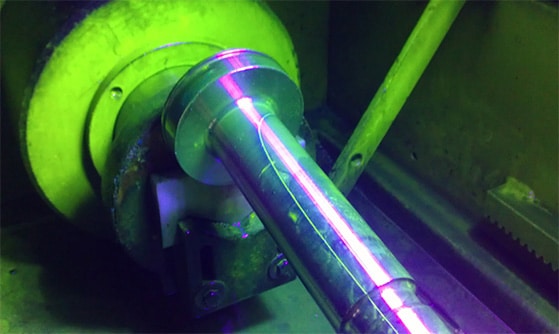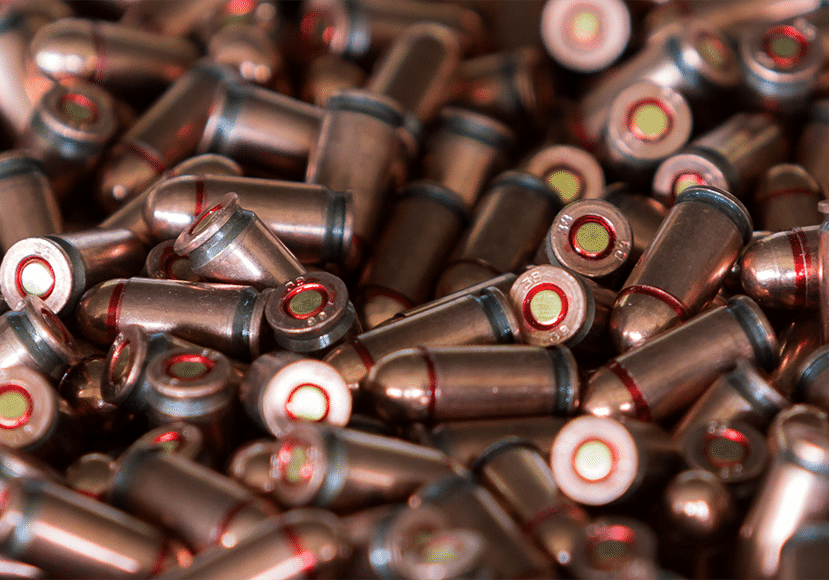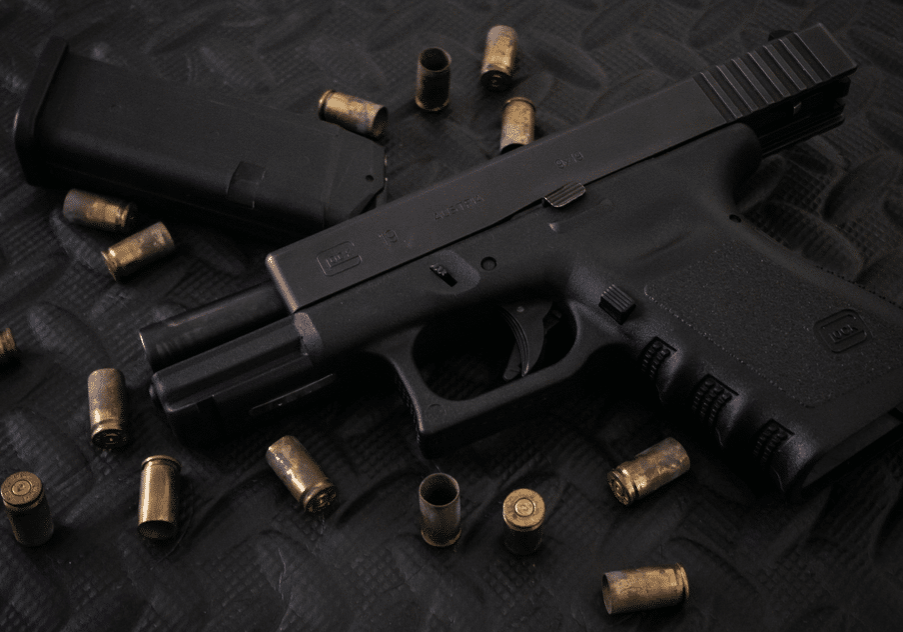Find The Best AR-15 Barrel for the Money (16″, 14.5″, 18″+, and SBR Lengths)
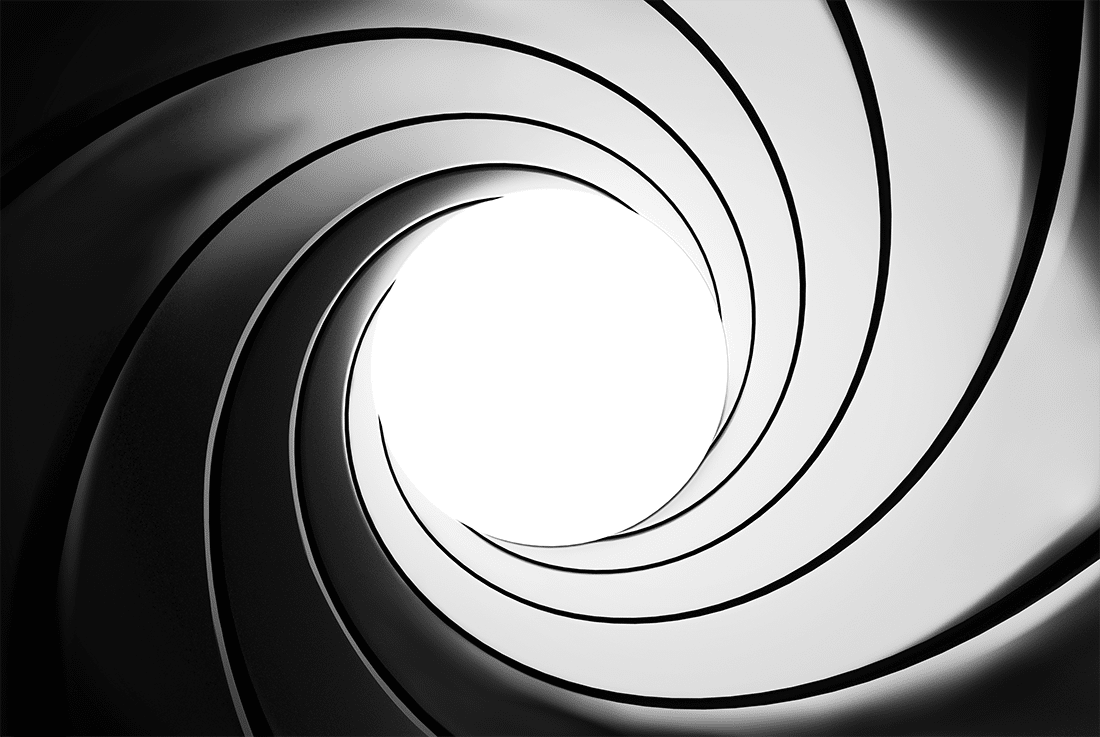
Whether you're building an AR-15 or buying a complete AR-15, we've got all the info you need on barrels in this guide. To start, we'll cover essential information about length, twist rate, materials, and more. Then we'll give you our picks for the best AR-15 barrel manufacturers and barrels.
To learn more about choosing the best barrel, click the expandable section below. Alternatively, you can just take our word for it and move onto our picks.
Here are the manufacturers who, in our opinion, make the best AR-15 barrels for the money, along with their products.
Ballistic Advantage (BA)
Ballistic Advantage barrels are our choice for the best AR-15 barrels for the money. They're priced to fit nearly any budget, and the company guarantees sub-MOA accuracy for all their barrels.
BA offers 4 barrel series: Modern, Performance, Premium, and Fluted Premium. We'll be skipping the Modern series because they're not MPI tested, but those building on a short budget can check them out here.
Performance Hanson AR-15 Barrels
Ballistic Advantage's Hanson Barrels are a proprietary barrel profile. The BA Hanson profile is a shoulder-less design which cuts down on barrel whip and thus benefits those shooting at a high rate of fire or full-auto fire.

BA Hanson Shoulder-Less Barrel Profile
In our minds, this makes it a great cost-effective option for home-defense rifles, SHTF rifles, or just general range fun.

From $140.25 at BA
Prices accurate at time of publishing
BA Hanson Performance Barrels are made from 4150 Chrome Moly Vanadium (CMV) Steel and have a Melonite lining.
All of these barrels are both high pressure (HP) tested and magnetic particle inspection (MPI) tested.
Ballistic Advantage offers these barrels in lengths from 7.5" to 17.7". All Hanson Performance barrels have a 1:7 twist rate. Click here to find all available lengths.
BA Hanson barrels also come with a low-profile pinned gas block at no additional cost, and you can even upgrade at checkout to a Superlative Arms Adjustable Gas Block.
.233 Wylde Premium Series and .223 Wylde Fluted Premium Barrels
For those of you that demand the best long-range performance, Ballistic Advantage offers their Premium Series of 416R stainless steel .223 Wylde barrels. For those not aware, .233 Wylde barrels offer increased accuracy and are often used to shoot heavy-grain .223 ammo in competition. Unlike normal .223 barrels, they have the ability to also safely shoot 5.56 NATO ammunition.
Within this series of barrels, BA has 4 profiles to choose from, all of which have a 1:8 twist rate. Some of these profiles also offer fluted options, which can reduce weight by up to 1 lb. They are also all HP and MPI tested.

From $168.25 at BA
Prices accurate at time of publishing
Hanson Premium (Stainless Steel)
The main differences between the Hanson Premium barrels and the Hanson Performance barrels is that the Premium barrels are made from stainless steel and have a 1:8 twist rate.
Hanson Premium barrels are available in lengths ranging from 10.3" to 18".

From $161.50 at BA
Prices accurate at time of publishing
BA SPR Premium and SPR Fluted Premium
BA's SPR barrels range from 14.5"-18" and are specifically designed for long-distance shooting. As a result of their design, they are heavier than Hanson profile barrels (8 oz heavier when comparing 16" Hanson to 16" SPR profiles). That is unless you decide on a fluted SPR, which only weighs 0.4 oz more than the Hanson profile, while still offering improved accuracy.

From $221.00 at BA
Prices accurate at time of publishing
BA DMR Premium
The BA DMR (Designated Marksman Rifle) barrel is essentially just the 20" version of the SPR profile. It's available in both fluted and non-fluted models.
For those looking for barrels outside of the standard 5.56/.223, Ballistic Advantage also makes AR-15 and AR-308 barrels in .224 Valkyrie, 6.5 Grendel, 9mm, 300 Blackout, 308 Win, and 6.5 Creedmoor.
Faxon Firearms
Faxon seems to be the most commonly recommended manufacturer of affordable AR-15 barrels today. Just because they're popular doesn't necessarily mean they make the best AR-15 barrel, but they're certainly in the conversation in terms of the value you get for your dollar.
The company is based out of Cincinnati, Ohio so I'm also happy to see a company located where I grew up have so much success in this industry.
Faxon offers extremely high-quality manufacturing with over 40 of experience in defense, aerospace, medical, automotive, and other industries. Since 2011, they've been applying their knowledge to barrels and now even complete rifles.
They're also known for their exceptional customer service in the unlikely event you have anything wrong with your products.
Compared to some other barrel manufacturers, Faxon has a wide variety of offerings. All of their barrels are made using either 4150 Mil-Spec CMV steel or 416R stainless steel, so we'll be using this as a starting point to breakdown what's available from them.
It's also important to note all Faxon barrels have a 1:8 twist rate, which we feel is optimal for most shooter's needs.
Faxon 4150 Mil-Spec CMV Barrels
All Faxon barrels are stress relieved and go through a variety of testing, including magnetic particle inspection. 4150 CMV barrels all have a QPQ Nitride finish. Now for the various Faxon 4150 barrel profiles.

From $159.00 at Faxon
Prices accurate at time of publishing
Faxon 4150 CMV Pencil Barrel
Faxon is known for making super high-quality lightweight parts. Perhaps the most extreme example of this is their pencil barrels.
A 16" Faxon pencil barrel weighs about 2/3 of what a Govt profile 16" barrel typically weighs.
While this may not sound like a crazy difference to some, the 10 oz of savings can make a drastic difference in comfort and weight balance.
The downside to this profile is that it gets hot pretty fast and begins to lose accuracy at that point. While it definitely doesn't make sense for combat, long-distance shooting, or as a SHTF weapon, it's perfect for a range toy build or even as a part of a home defense gun.
Faxon's pencil barrels are available at 10.5", 14.5", or 16". You can also get a 14.5" barrel with a permanently attached 3 prong flash hider or 3 port muzzle break. Naturally, the barrels with permanently attached muzzle devices are more expensive than those without them.
From $159.00 at Faxon
Prices accurate at time of publishing
Faxon 4150 CMV Gunner Barrel
While Faxon is known for their pencil profile, the Gunner barrel profile is why many people end up choosing Faxon.
The Gunner profile starts with a Govt profile taper, then moves into a 1.9" long gas block journal, and finally is pencil width to the muzzle.
This allows it to both reduce weight and have superior balance compared to conventional barrels, while still improving heat resistance. The 16" barrel weighs about 8 oz less than many 16" Govt profile barrels.
Gunner barrels are available in 11.5", 14.5", 16", 18", and 20". Again, you can also get the 14.5" barrel with a pinned 3 prong flash hider or 3 port muzzle break.

While I own and like Faxon's FX5500 Ultralight Complete AR-15, which has their pencil barrel, I'd personally opt for the Gunner profile for most builds.
From $149.00 at Faxon
Prices accurate at time of publishing
Faxon 4150 CMV Gov't / Socom
Rounding out our Faxon 4150 CMV barrel section is their Gov't / Socom profile.
While it doesn't have the weight savings of their other profiles, it still is made with the exceptional detail of all Faxon barrels.
The Gov't / Socom profile is available in 7.5", 10.5", 14.5", 16", 18", and 20" lengths.
Faxon does not offer this profile in 14.5" with permanently attached muzzle devices.
Faxon 416R Stainless Steel Match Series Barrels
For those focussed on building an AR-15 with superior accuracy, there's Faxon's Match series 416R stainless steel barrels.
All of Faxon's 416R barrels are chambered in .223 Wylde and have a 1:8 twist rate. These barrels are 5R rifled, which reduces projectile deformation and makes barrels easier to clean.
They are lined by a salt bath nitriding process and go through the same testing as the 4150 CMV barrels.
From $219.00 at Faxon
Prices accurate at time of publishing
From $299.00 at Faxon
Prices accurate at time of publishing

From $305.00 at Faxon
Prices accurate at time of publishing
Faxon 416R Stainless Steel Flame Fluted Barrel
Last but certainly not least from Faxon is their Match series Flame Fluted barrels. In addition to offering a more interesting aesthetic to traditional fluted barrels, the flame fluting arguably helps reduce stress to the barrel.
Cold hammer forging (CHF) is a manufacturing process in which hard steel is used to "hammer" a barrel into shape while keeping the barrel at relatively "cold" temperatures. They are hammered against the reverse imprint of the rifling as opposed to the more common "button rifling" process.
CHF barrels are all the rage these days, with many users claiming they have better barrel life. Unfortunately, there's no definitive testing I've found that proves a substantial increase in barrel life for CHF barrels, though they are higher in tensile strength.
That being said, from what I've seen from others and experienced myself, there does seem to be an increase in barrel life, but I personally don't think it makes economic sense to buy a CHF barrel. What I mean by this is that a CHF barrel costs nearly twice what the barrels above cost, but they do not last twice as long. It's pretty easy to replace a barrel, so you're probably better off just replacing it with another standard 4150 CMV barrel when it dies. It's probably still cheaper even if you're paying someone to replace it each time.
I'd only recommend a CHF barrel for:
- Combat or legitimate tactical use.
- Serious preppers that want to be sure their gear will last as long as possible.
- Those of you who have the money to spend and just want the best.
VERY few companies actually manufacture CHF barrels, so when you buy a CHF barrel branded as an "[insert manufacturer name] CHF barrel", there's a good chance it wasn't actually made by them.
Daniel Defense
One company who actually does make their own cold hammer forged barrels is Daniel Defense. As we've covered in our "Best Complete AR-15s" guide, Daniel Defense has been the go-to recommendation in recent years for battle-ready AR-15s. Much of their reputation has come from their barrels, and thus, they're our choice for the best AR-15 barrels that are cold hammer forged.
From $275.00 at Brownells
Prices accurate at time of publishing
Daniel Defense CHF Government Profile
We pretty much covered everything we have to say about CHF barrels in general and Daniel Defense above. To the left you can see their Government profile barrel.
Daniel Defense's cold hammer forged barrels are available in the following lengths: 10.3", 11.3", 12.5", 14.5", and 16".
From $275.00 at Brownells
Prices accurate at time of publishing
Daniel Defense CHF Lightweight Profile
DD also makes a lightweight profile CHF barrel. This reduces weight in the 16" LW barrel by 3.2 oz compared to their Government profile 16" barrel. For further comparison, this 16" LW is still about 2 oz heavier than Faxon's 16" Gunner and nearly 5 oz heavier than Faxon's pencil barrel.
Daniel Defense's lightweight barrels come in 14.5" and 16".
Conclusion
Though I and many others believe that the barrel is the most important part of any rifle, there are some great affordable options out there that will get the job done for 99% of people. My recommendations as far as the best AR-15 barrel manufactures go are Ballistic Advantage or Faxon Firearms.
If you really want a cold hammer forged barrel, I'd recommend Daniel Defense.
We wanted to keep this list relatively short and to focus on brands we've dealt with ourselves that bring the most value, but here are some of the other best AR-15 barrel manufacturers to look into to:
Building an AR-15? Check out our full AR-15 Build List that includes all of favorite parts.

